Step by step video guide here:
Access Line calls are documented on the Inquiry screen.
- Click the Search icon.
- Type Inquiries in the search bar.
- Click to select Inquiries (My Office).

- This will bring you to the Inquiries list page. Create a new inquiry by using the new icon.

- This will bring up the client search window. You may search to determine if the person is a current client. If person is a new client, or you cannot find them in the system, click “Inquiry (New Client)”
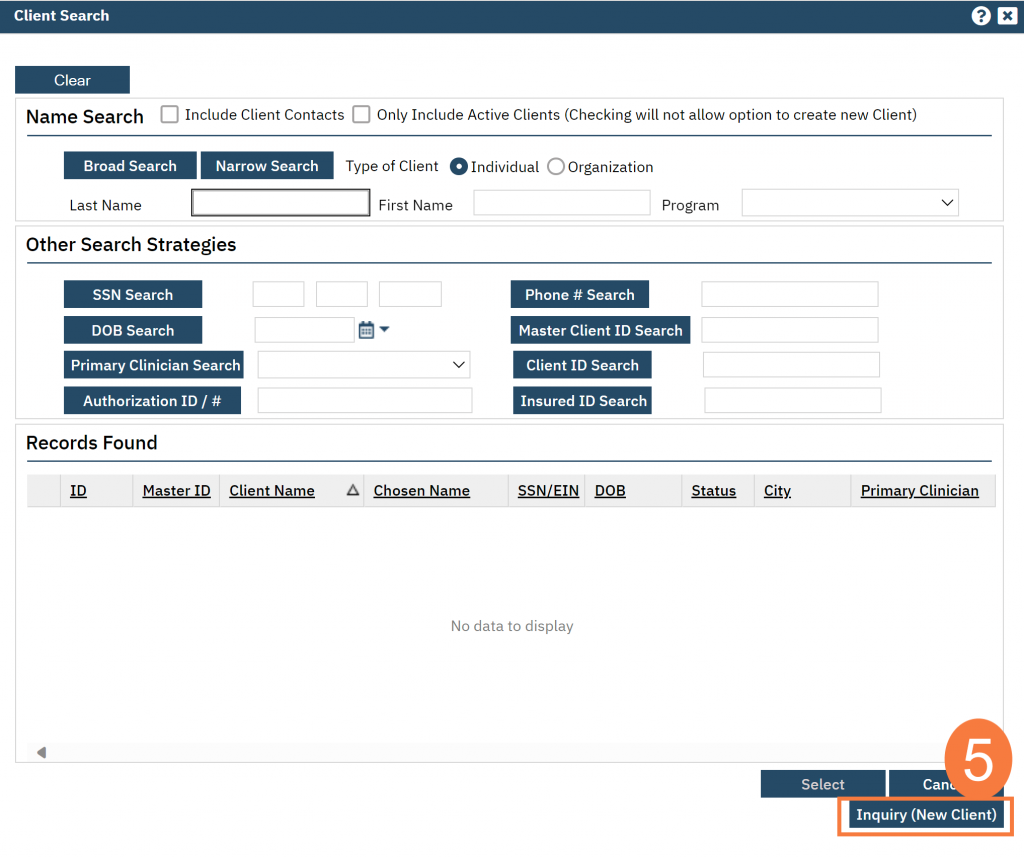
- To search for a client, enter their name and click “Broad Search.” You can also search by SSN by entering their social security number and clicking “SSN Search.” You can do the same with date of birth (DOB), phone number, etc. If you find the person in the system, meaning they show in the Records Found section, click “Select” to bring their information into the Inquiry screen.
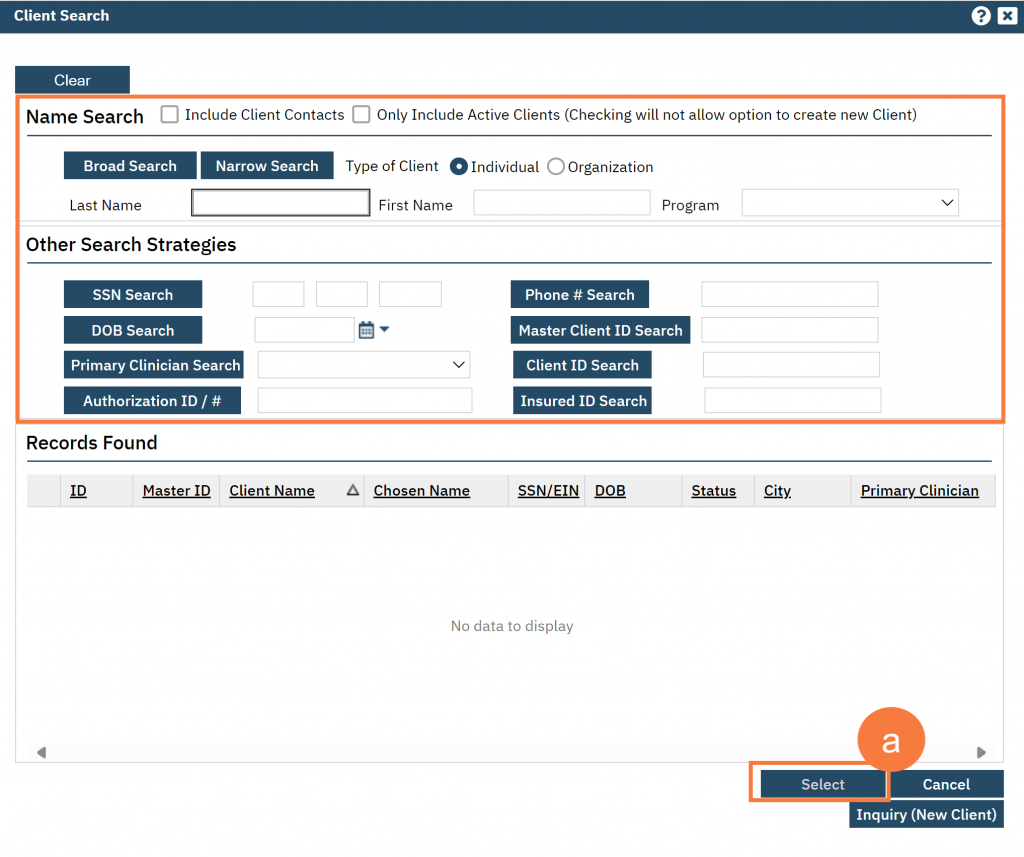
- This brings you to the Inquiry Details screen. Complete the information about the caller, or “Inquirer”.
- If the client is calling for themselves, select “Self” under “Relation to Client.” This way, as you enter the caller’s information, it will push this information automatically into the “Client Information” section.
- Make sure to input the start date and time of the call. There are buttons for “T” (today) and “Now” to help make this quick and easy.
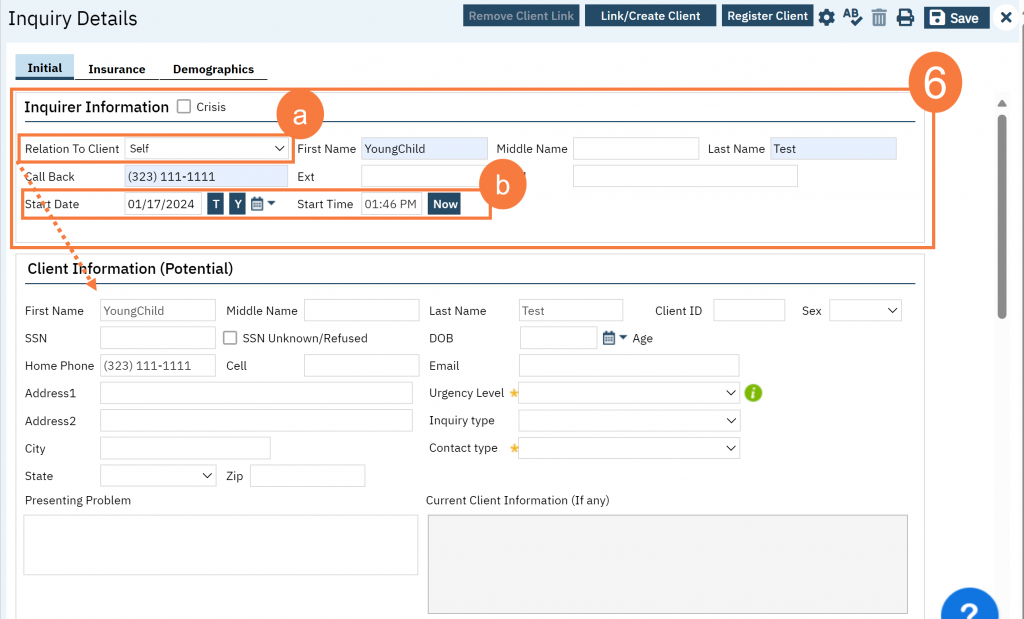
- Complete the information about the potential client.
- Complete the First Name and Last Name fields. Middle Name is not required but can be added as necessary.
- Complete the SSN and DOB fields. This is for the client’s social security number (SSN) and date of birth (DOB), respectively. If the client refuses to share, or doesn’t know, you can simply check the box “SSN Unknown/Refused.” Once saved, this will fill in the SSN with “999999999”, which is SmartCare’s version of “no SSN”.
- Complete the Sex field.
- Complete the Urgency Level, Inquiry type, and Contact type fields. The options for each field are listed in the tables below. This includes a description of when to use each option.
- Click Save.
| Urgency Level | Description /Use Case |
|---|---|
| Urgency Level Emergent | Description /Use Case Use if the call is an emergency |
| Urgency Level Not Urgent | Description /Use Case Use if the call is a routine request for services |
| Urgency Level Urgent | Description /Use Case Use if the call is an urgent request |
DHCS defines urgent as: “When the beneficiary’s condition is such that they faces an imminent and serious threat to their health, including, but not limited to, the potential loss of life, limb, or other major bodily function, or the normal timeframe for the decision making process would be detrimental to the beneficiary’s life or health or could jeopardize their ability to regain maximum function, decisions to approve, modify, or deny requests by providers prior to, or concurrent with, the provision of health care services to enrollees, shall be made in a timely fashion appropriate for the nature of the enrollee’s condition, not to exceed 72 hours.”
| Inquiry Type | Description/Use Case |
|---|---|
| Inquiry Type Requests for services/screening | Description/Use Case Use when the reason for the call is a request for new services |
| Inquiry Type Crisis | Description/Use Case Use when the reason for the call is for crisis services |
| Inquiry Type Information | Description/Use Case Use when the reason for the call is for information |
| Inquiry Type Discharge/Transition Coordination | Description/Use Case Use when the reason for the call is for another provider to coordinate transition of care to/from your agency |
| Inquiry Type Jail Diversion | Description/Use Case Use when the reason for the call is related to Jail Diversion programs |
| Inquiry Type Consultation | Description/Use Case Use when the reason for the call is for an outside provider seeking a consultation |
| Inquiry Type Other | Description/Use Case Use when the reason for the call is not addressed by any of the above |
| Contact Type | Description/Use Case |
|---|---|
| Contact Type Call | Description/Use Case Use when the inquiry was complete via telephone |
| Contact Type Face to Face | Description/Use Case Use when the inquiry was completed via in-person, such as a walk-in |
| Contact Type Form | Description/Use Case Use when the inquiry was completed via form, such as a referral that was sent to the county |
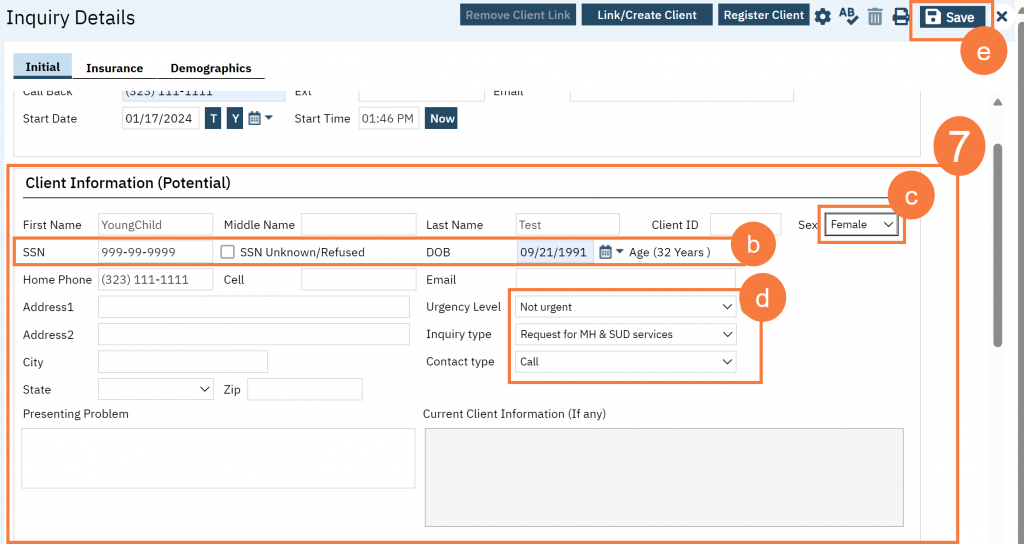
- Select the “Link/Create Client” button. This will bring up the client search window, with a few extra buttons at the bottom.
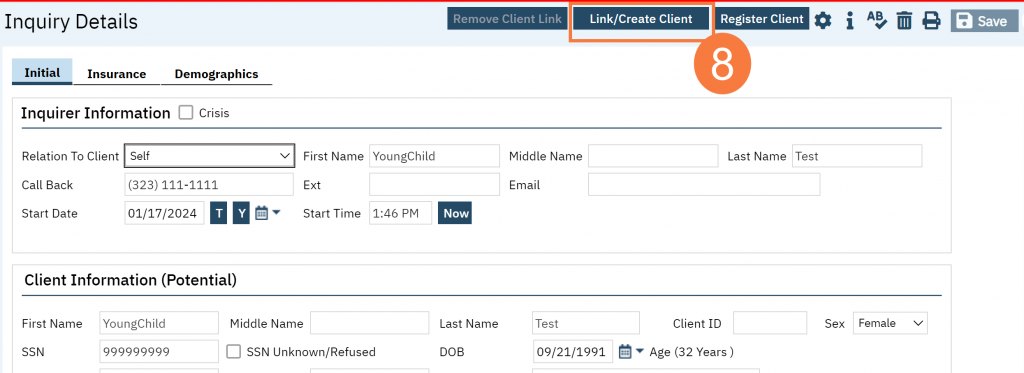
- You must search by name by clicking on either “Broad Search” or “Narrow Search”.
- You must also search by SSN and DOB by clicking on those respective buttons.
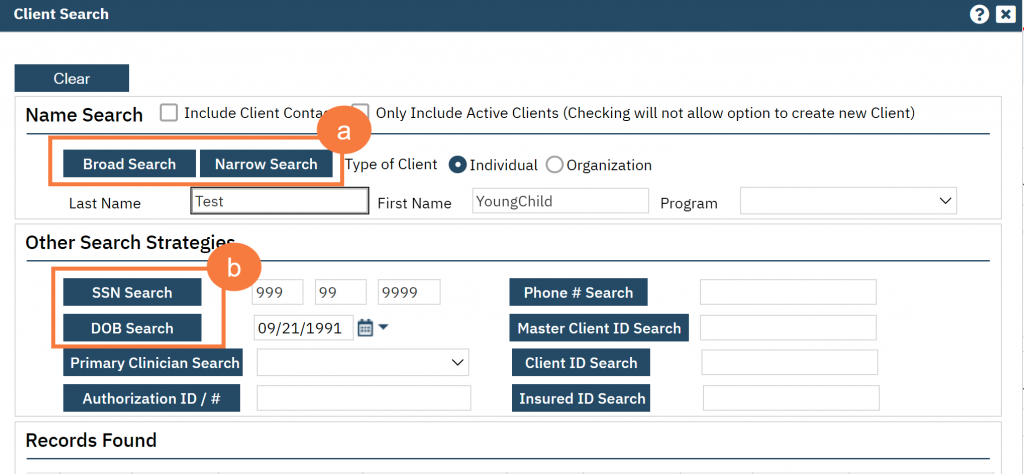
-
- If no records are found based on the search you do, an alert will show at the top of the window

-
- Any search results will show in the “Records Found” area. Review the Records Found to determine if the person is already in the system as a client.
- If the person is already a client in the system, select the button next to the appropriate record.
- Click “Select” to link the Inquiry to the selected client.
- If the person is not a client, meaning no records were found matching the client’s information, click “Create New Client Record.”
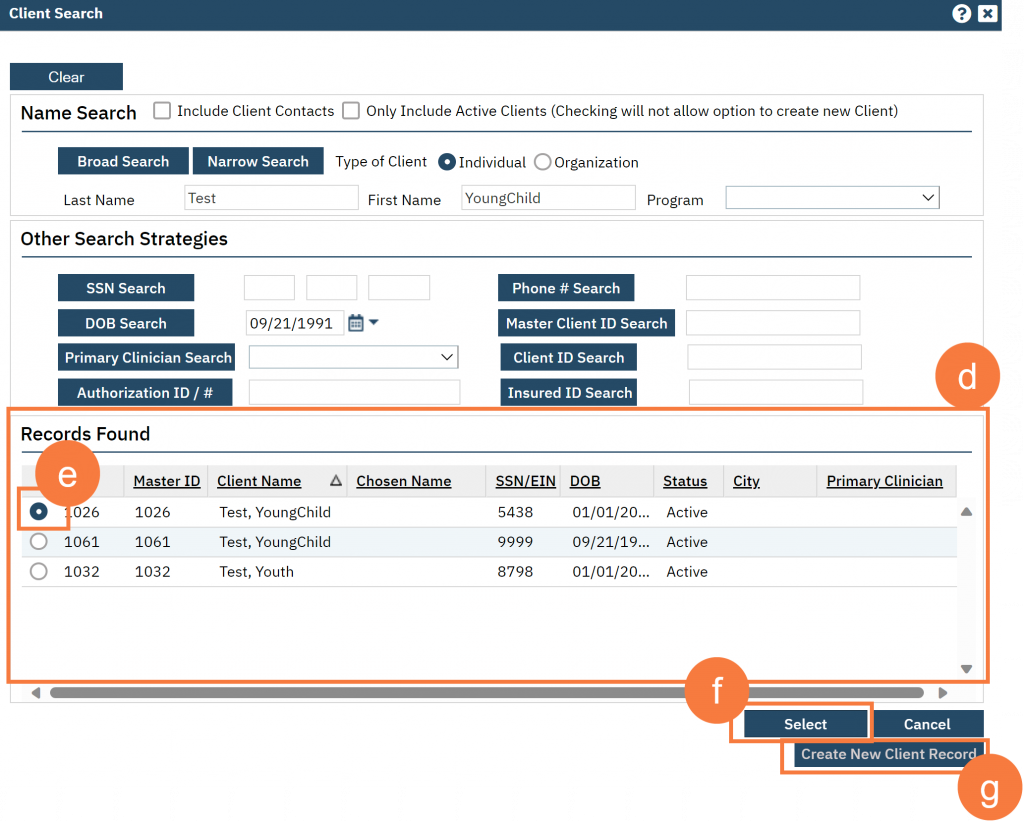
- This will take you back to the Inquiry screen but now a client ID number will be added.
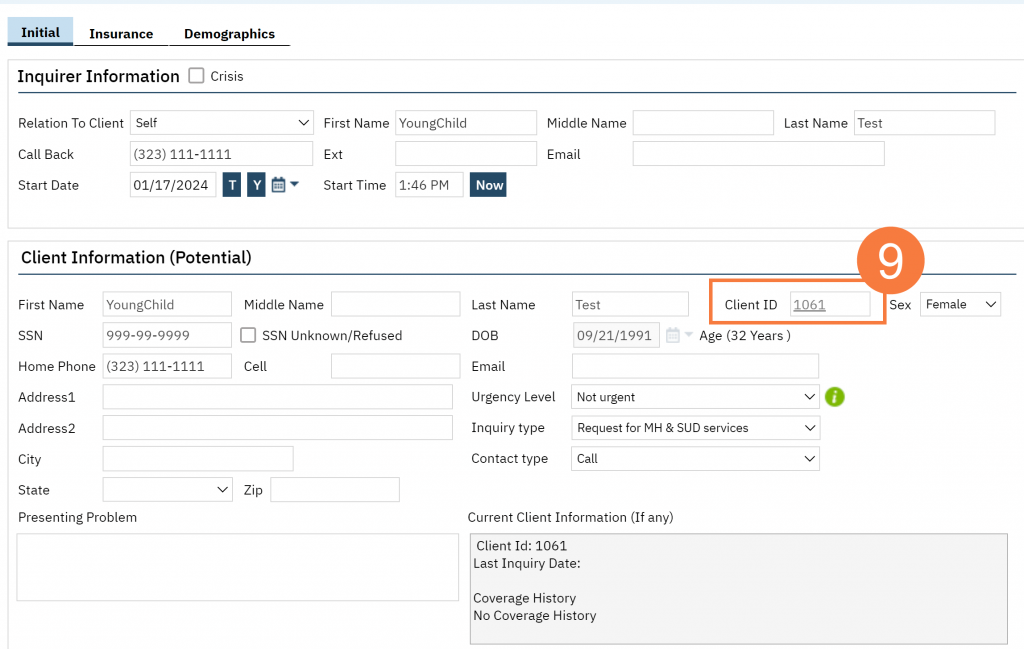
- Click on the “Insurance” tab.
- Select “Medi-Cal” from the “Payer” drop-down and enter the client’s Medi-Cal number (CIN) in the “Insurance ID” field. Click “Verify” to verify the client’s Medi-Cal insurance.
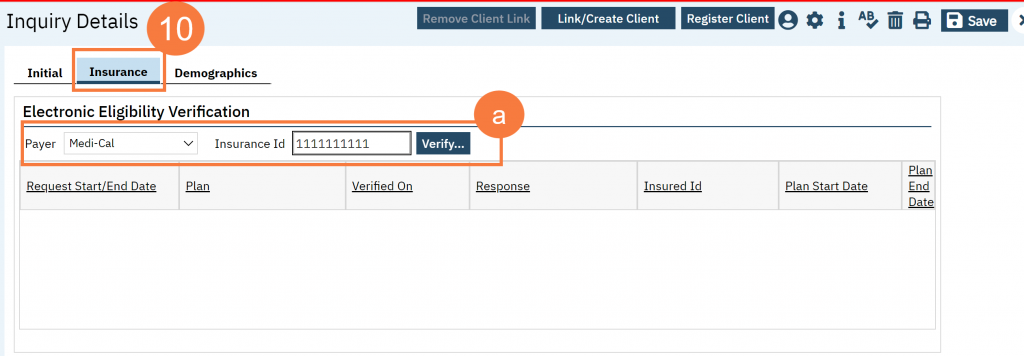
- Click on the “Demographics” tab.
- We recommend completing the “Gender Identity” and “Pronoun” fields to ensure the person is not misgendered as additional staff engage with the client.
- Complete the “Primary/Preferred Language” field. If the client does not speak English or requires an interpreter, make sure to check the appropriate checkbox.
- If the client has any transportation issues and will need transportation to and/or from appointments, check the Transportation Service checkbox.
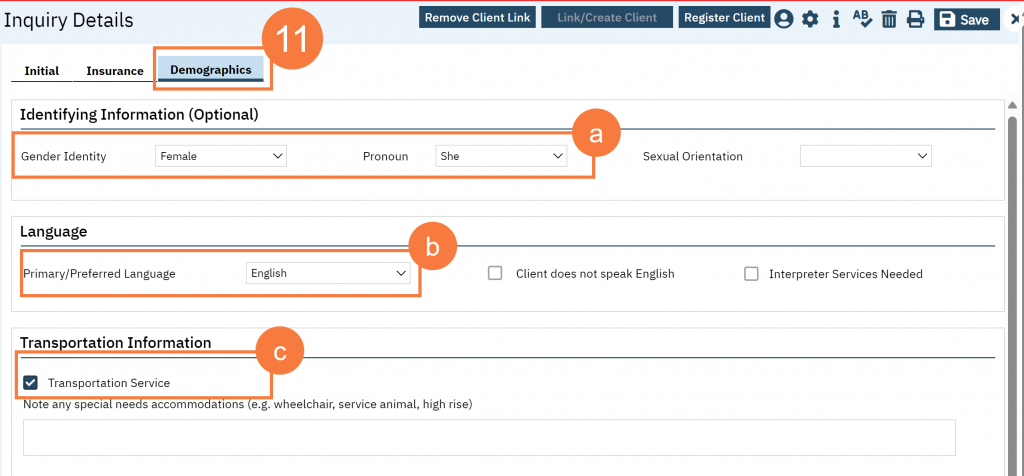
- You may enter any additional information in any of the tabs, but none are required. Once complete, enter the end date and time of the Inquiry and change the status to “Complete”. Once again, there are “T” (today) and “Now” buttons to make this easier.
- Click Save. You may now close the Inquiry and move on to Screening.
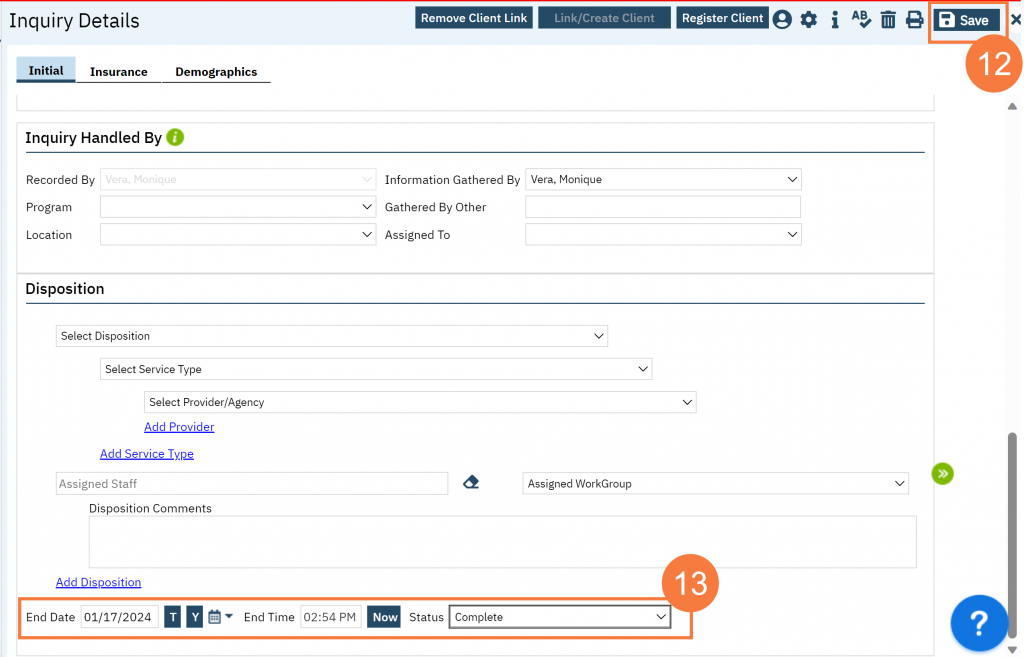
- Last Updated: June 5, 2025
